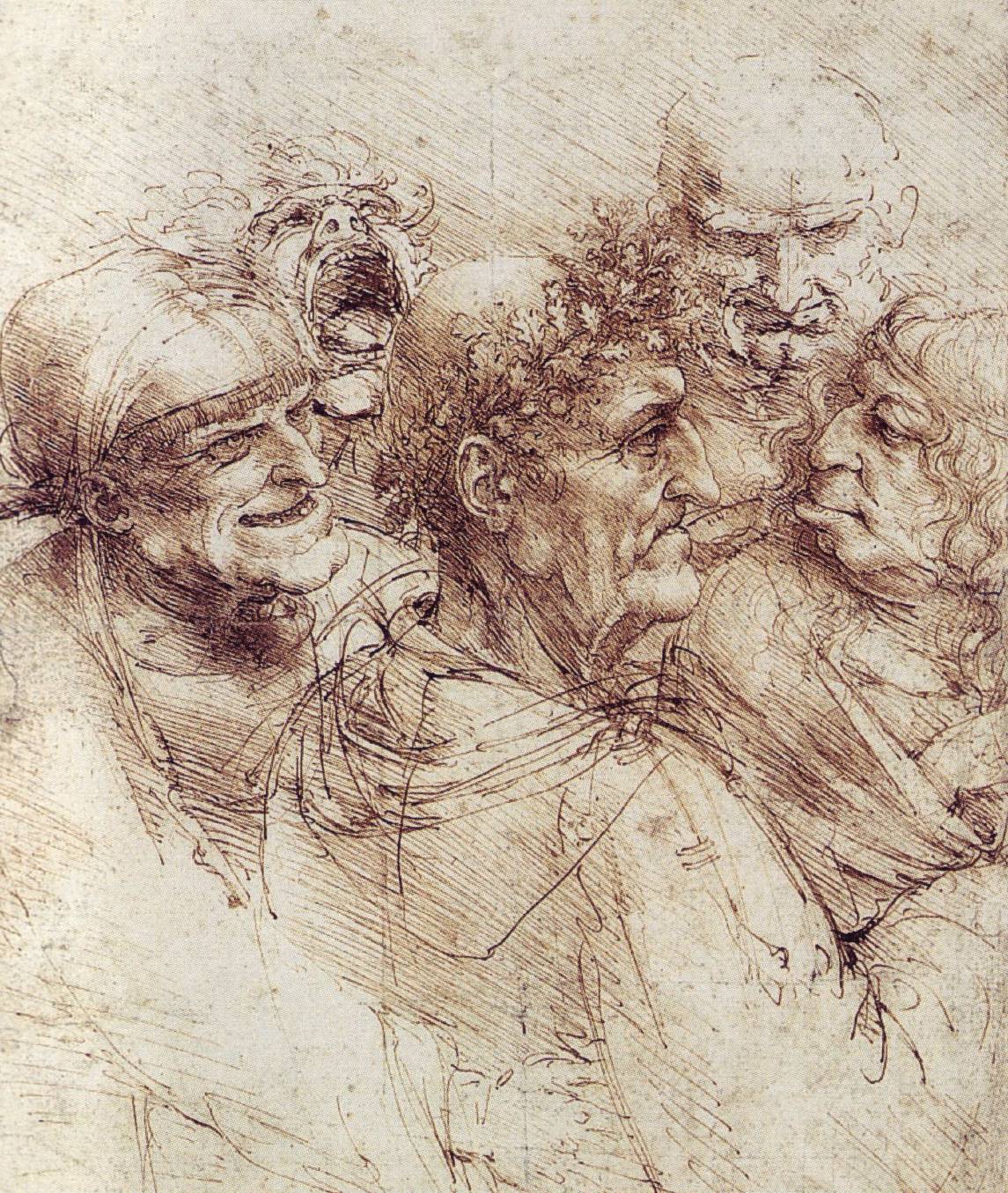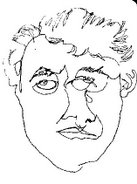
This review is inspired by Katherine Tyrell's (of Making a Mark fame) October Book Review project, timed to co-incide with the Big Draw in the UK.
This book was first published in 1967, and is now out of print, but you can find used copies on Amazon and elsewhere. The author, who died in 1980, was on the faculty at Stanford University for over 30 years, having himself studied at Stanford and also at the Art Students League of New York. Although Mendelowitz taught drawing at Stanford, and aimed this book at art students, it is not a "how to" book of the sort that we have become used to. Rather, it is a tour of the history of drawing; meant to be inspiring rather than instructing.
The book is over 450 pages long and contains over 300 illustrations of masterful drawings, many familiar but also a large number of more obscure pictures. It inspires by reminding us of the sheer variety of possibilities encompassed by "drawing." It was the most important single thing that finally made me do what I had wanted to do for a long time: begin the lifelong process of learning to draw.
The book consists of three main sections. The first is a history of drawing, starting, inevitably, with cave drawings and finishing in the middle of the twentieth century. I have read some reviews of this book written in the academic literature soon after it was originally published, and they are rather sniffy about this section, perhaps because Mendelowitz was not an art historian. To someone who, like me, is not an art historian it is wonderful to be guided through the major developments in the history of drawing by someone who is so obviously in love with this form of artistic expression.

There are lots of familiar drawings in this section, though who is going to object to seeing favourite drawings by Leonardo, Michaelangelo and Raphael in chapter 3, which deals with the Renaissance in Italy? I did learn that Leonardo was left-handed: look at the direction of his hatching for the proof of this. This drawing, from the Royal Library at Windsor, is one of the many illustrations in chapter 3. In many ways, Michaelangelo is the real star of Renaissance drawing, as he often treated drawings as works of art in their own right, rather than as preparatory studies for paintings.
Chapter 4 deals with Italian Baroque drawings. I was struck by the gestural quality of many works in this chapter, such as this one by Guercino. The next chapter shifts to the Northern Renaissance, and it will come as no surprise to know that the most striking drawings in this chapter are those of Durer (including the famous "Great Piece of Turf" from the Albertina in Vienna) and Rembrandt. One of the latter's drawings really struck me the first time I read this book because of its amazing economy of line. This, it seemed to me, was the real magic of drawing: the ability to produce a wonderful work of art with just a few strokes of a pen.
The next chapter shifts to the Northern Renaissance, and it will come as no surprise to know that the most striking drawings in this chapter are those of Durer (including the famous "Great Piece of Turf" from the Albertina in Vienna) and Rembrandt. One of the latter's drawings really struck me the first time I read this book because of its amazing economy of line. This, it seemed to me, was the real magic of drawing: the ability to produce a wonderful work of art with just a few strokes of a pen.
Moving on to France, England and Spain there are a few surprises; or, at least, they were surprises to me when I first found this book. For example, I had never seen Claude Lorrain's wash drawings before (my favourite one, of the River Tiber, is actually in a later chapter). There is also a wonderful charcoal study of a monk by Zurbaran and a typical work by William Blake.
There are even more surprises in the chapters on the twentieth century. I shouldn't, I suppose, have been surprised by Picasso's skill as a draftsman, but his simple contour drawing of a seated nude was a revelation. The quality of line is breathtaking. There is also a wonderful sketch of Fritizi, Paul Klee's cat that was so often his model.

The second section of the book departs from this fairly conventional, chronological treatment of the subject. Instead it deals with what Mendelowitz calls the Art Elements: line, form and value, and texture. Drawings illustrating the use of, for example, different types of line are presented and discussed. Ingres is used to demonstrate the line as a delimiting edge, Raphael the use of value to model form, and Degas the representation of texture. In many ways these three chapters are my favourites in the book, because this is when the huge variety of effects that can be produced with a pencil or a stick of chalk is made most apparent. Even if one just looks at drawings in which line is the dominant element there is a huge range of art, from formal academic work through to abstract art.
The final section deals with the different media that can be used for drawing, though this is rather conventional: metalpoint, pencil, chalk, crayon, charcoal, and ink are the main ones covered. There is also a chapter on imaginative drawing. Interesting though these chapters are, though, it is the first two sections that, for me, really make this book special. It is a massive book, but that didn't stop me reading it cover to cover when I first bought it. Now, I tend to dip in to it for inspiration or just to admire the amazing achievements of so many wonderful artists. It's a shame it's no longer in print, but it is well worth seeking out.
Pencil rating: 5 pencils






















